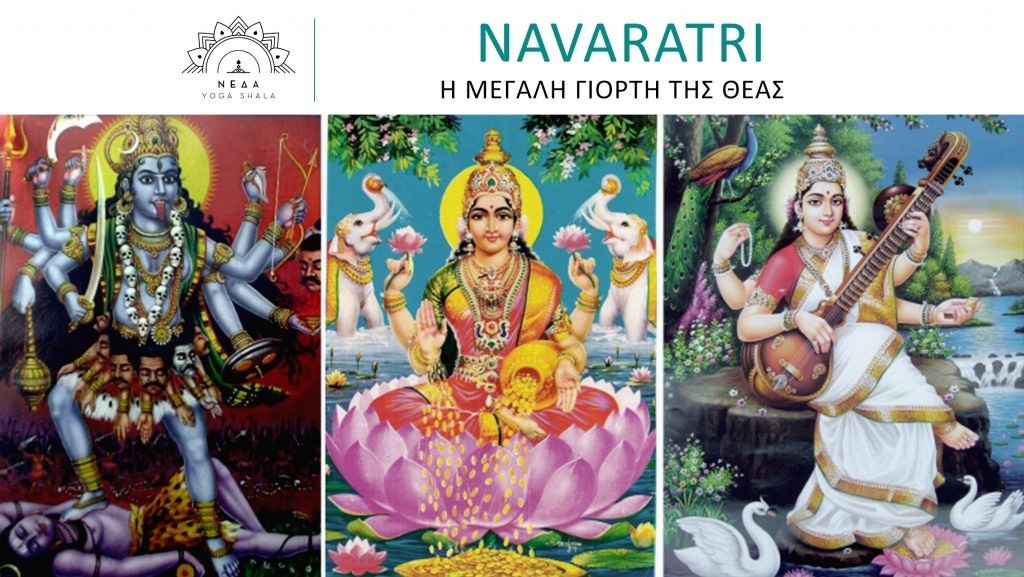
Navaratri: The great Goddess Festival!
According to the Hindu tradition, the world was created from the union of Shiva and Shakti. Shiva, is the Spirit, the Supreme Consciousness, the stable, indestructible and eternal observer, who is immaterial, and as a result, cannot create anything material. Shakti, Shiva’s wife is the symbol of the creative energy behind the Supreme Consciousness. Through their union, Shakti provides energy, life, and allows the immaterial Spirit to be manifested, resulting in the creation of nature and the world.
Today begins the festival of Navaratri, one of the biggest festivals in India. During this 9 days long festival (nava=9, ratri=nights) we celebrate Shakti, the creative energy, the Cosmic Mother. According to Tantra texts, “Woman is the creator of the universe, the universe is her form; woman is the foundation of the world, she is the true form of the body. In woman is the form of all things, of all that lives and moves in the world. There is no jewel rarer than woman, no condition superior to that of a woman”.
The festival is divided in 3 parts and during each one we celebrate one different aspect of the Goddess:
- 3 first days: We celebrate the Goddess in the form of Kali. Kali (see the picture on the left), comes to kill all inner negativity and attachment, all that is not good or pure, and all that burdens us.
- 3 following days: After we are cleansed by the power of Kali, it’s the turn of Goddess Lakshmi to arrive, filling us with spiritual wealth, love and compassion.
- 3 last days: With a cleansed body and spirit, full of qualities of pureness, we welcome Goddess Sarasvati (see picture on the right), the Goddess of knowledge, music and arts, who brings us wisdom and creativity.
This festival symbolizes the victory of Good, of the pure divine forces that we all carry within us, in the face of evil, of the dark demons that often overwhelm us. It is an auspicious time of the year, and whatever yogic practices we carry out during this time will have a strong influence to our spiritual evolution, thanks to the helping hand of Shakti, who is continuously called upon by thousands of people in prayers, celebrations and practices during the festival.
For us westerners, Navaratri narrative may sound kind of foreign, but it symbolizes the battle between the forces of good and evil that exist inside all of us, regardless of our origins. A useful practice is trying to transform just one negative feeling. Pick one that comes up often (for example, anger) and before expressing it (for example, by shouting), try to see it (for example, fast heart rate, changes in breathing, desire to lash out etc). As soon as we see it coming, but before expressing it, let’s try to find a way to turn it into something positive. Like, for example, think of something that gives us joy, that moves us, that touches us. So, a bad feeling (like anger) is not suppressed, but transformed. Besides, feelings are nothing more than moving energy (e-motion = energy in motion), and through this practice, we move the energy from one part of the body (like the belly, in the case of anger), to another part (like the heart, in the case of my child). In the beginning, it may feel weird and controlling, but soon, the mind gets used to it and obeys easier.
As Swami Sivananda also points out, “For it is through the positive forces of love and brotherhood and selflessness that negative and un-divine elements can be effectively eliminated from the heart and the mind. Darkness can never resist light.
Happy Navaratri!!